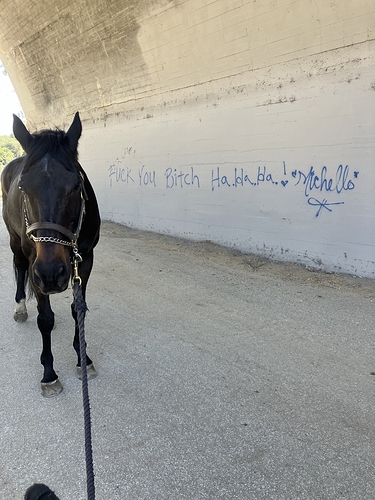In Los Angeles, if you are zoned for horses, you can stock to 10 horses per acre and I was once in a facility that had a variance for 100 horses on 5 acres.
You commit to a plan to get these horses out at least 6 days a week (hopefully 7) with a combination of turnout, riding yourself, training rides, a part-lease, or begging a friend/barn-rat to get your horse out. Usually people IME try to turnout 7 days a week and get the horse ridden 5-6 days a week.
It’s not ideal but horses that do have owners who make these arrangements seem to do relatively okay.
Turnout is typically 30 minutes to an hour in a small sun paddock. The use, as you can imagine, is tightly regulated, so that people don’t overstay their allotted time - often a trainer has just one for their barn.
Other facilities often have Mare Motels that are 12 x 24 covered or half-covered pipe ‘stalls’ that give horses a bit more room and socialization. And there are barns that have dirt communal group turnouts, usually for lesson strings or for the lower level pleasure/trail riding folk. Often these are … interestingly hilly!
Horses are tucked into all kinds of surprising areas in greater Los Angeles.
There’s little grass, not just because of the water, but because of the density and the soil type. It just doesn’t hold up to hooves. The only place I’ve been at where there’s grass you can ride on, sort of, was Middle Ranch.




